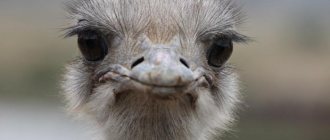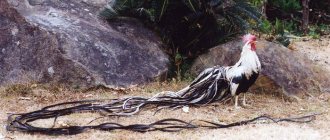Some animals hit the jackpot when it comes to ear size. If you are talking about a large animal such as the African Elephant or the much smaller Bush Baby then this is understandable. But there are many animals with the largest ear to body ratio, making them the creatures with the largest ears in the world.
Of course, an elephant's ears are significantly larger than those of other animals, but compared to their body size, some small animals' ears are much larger than you might think.
While they may also appear cuter than other animals with smaller ears, many animals with larger ears have them for very good reasons. They are often used for cooling or even pest control. Other animals with long ears are able to position them to hear sounds from certain directions or even pick up sounds at frequencies that humans can't even hear. Whatever their reasons for developing large, adorable ears, these animals are record breakers.
Serval
Photo: San Diego Shooter/
/CC-BY-NC-ND 2.0
The serval is a species of wild cat found in sub-Saharan Africa, although some have been seen in North Africa and the Sahel.
The Serval is a medium-sized cat, reaching between 10 and 20 kilograms. They usually have black markings on their bodies, but their most noticeable feature has to be their oversized ears. Interestingly, their ears are not much larger than those of typical domestic cats, but compared to their head size, they stand out noticeably.
Serval ears are not for fun, but are used primarily for hunting their typical prey, which includes rodents, birds, insects, frogs and small reptiles. They use their keen sense of hearing to locate their prey. They then stalk their prey like most cats and pounce on them from over six feet away so they can bite and snap the neck of their prey. Its ears are not the only enlarged feature found in the Serval, as they are also characterized by the longest leg-to-body ratio of any cat species. Scientific name : Leptailurus serval Type: Leptailurus
Golden brush-tailed possum kuzu
Brush-tailed gliders are the most common Australian marsupial, but the kuzu differs from the dark mass by its reddish, long, fleecy fur. The golden color of the animal is due to a low level of melanin pigmentation.
The peculiar color of the fur determines its demand in the market, and for some time hunting the animal was the main income of local aborigines. The animal is very slow and catching it was not difficult for almost any person who climbs trees. When danger approaches, instead of fleeing, the animal hangs on tree branches and becomes numb.
The appearance of wild cats and dingo dogs on the Australian continent also contributed to the decline in the population. Today, the kuzu's habitat is small islands and lost corners of Tasmania.
Fennec fox
Photo: greyloch/
/CC-BY-NC-ND 2.0
The fennec fox is a well-known fox species due to its signature large ears. They are the smallest fox species and can be found in North Saharan Africa, the Sinai Peninsula, the Arabian Desert and Southwestern Israel. Their bodies have evolved to help them survive in the arid climates they live in, and their ears feature prominently in this adaptation.
While their ears are incredibly sensitive and aid in hunting - they can even hear animals moving around underground - their main function is to dissipate heat from the fox's small body. This adaptation helps the fox survive in dry, hot climates, but also makes it one of the cutest foxes around. Because of this, some Fennec Foxes have found their way into the exotic pet market and can be bred in captivity and look very similar to dogs.
Scientific name : Vulpes zerda
Type: Vulpes
Aye-Aye
Photo: Elias Neideck//CC BY-SA 4.0
The aya aya is perhaps one of the least attractive lemur species found in Madagascar thanks to its rodent-like teeth that continually grow throughout the animal's life. They have a number of advanced features, including a special thin middle finger, but their ears make one of their most prominent facial features. Compared to other primates, the Aye-Aye's ears are unusual and more cat-like in appearance, although they work well for finding food. Because of the unique way they find larvae, they fill an ecological niche more similar to a woodpecker than a lemur. They touch trees and use their hearing to find the larvae inside. They then drill a small hole with their large incisors and insert their specialized middle finger inside to extract their prey. The only other animals that seem to do this are the banded possum and the woodpecker, which makes Aye-Aye one of the strangest primates on the planet. Scientific name : Daubentonia madagascariensis Type : Daubentonia
Slow (small) loris
The big-eyed animal of the Loriidae family is also called the small slow loris due to its miniature size - no more than 22 cm in length. Habitat: tropical forests and bamboo groves in Southeast Asia. The animal is often confused with a lemur, but the loris is a loris from the suborder of wet-nosed monkeys. Slow lorises live in treetops and are nocturnal. They feed on fruits, flowers, insects, and bird eggs.
Amazingly, this furry, cute little animal with expressive, large, always open eyes is poisonous. On the inner sides of the elbow joints of the slow loris there are brachial glands that secrete toxins. When mixed with animal saliva secretions, a highly toxic substance is formed. With its sharp teeth, the animal easily bites through the skin of the victim. If a person is bitten, anaphylactic shock and death may occur in the absence of medical assistance within half an hour.
African bush elephant
Photo: brainstorm1984/flickr/CC-BY-ND 2.0
Elephants are well known for their enlarged ears and were even featured in a Disney film, but among the two extant species of elephants in Africa, the African Bush elephant holds the record because it has the largest ear-to-body ratio. The African Bush Elephant's ears are not just for fun, but also help the elephants survive in the hot, dry climate they find themselves in.
Because their ears are large and flat, they can move them in a way that creates air currents that help remove their excess body heat, allowing them to cool down during the hottest parts of the year. They constantly flare their ears to ward off insects and pests that might otherwise irritate them. Their ears are also very sensitive and can be used to communicate at frequencies that humans cannot hear, but elephants can discern great distances. Elephants also stick out their ears as a show of strength when confronted, which helps make their already massive size even more menacing.
Scientific name : Loxodonta africana
Type: Loxodonta
Dik-diki - dwarf antelope
The smallest antelope lives in the wooded areas of the west of the African continent. The height of the withers is about 30 cm and the weight is like that of a brown hare - 2-3 kg. The toy animal has sharp horns and is capable of resisting some predators, for example, jackals. The baby is surprisingly fast, the fixed speed reaches 40-45 km per hour, but only at close distances.
Still, the main way for the dik-dik to avoid unfriendly attacks is not a speed race, but its own miniaturization. In the habitat of the dwarf antelope, the thickets of thorny bushes are literally riddled with many pipe tunnels, into which only this cutie can crawl. Therefore, it is also called the bush antelope.
Caracal
Photo: Tambako the Jaguar/
/CC-BY-ND 2.0
For a long time, the caracal was classified as a lynx (Lynx), which it resembles in appearance, but due to a number of genetic characteristics it was separated into a separate genus.
Despite this, the caracal is still a little closer to lynxes than other cats, while being much closer to the puma in morphological characteristics. The caracal is also close to the African serval, with which it interbreeds well in captivity. The caracal has been tamed and domesticated since ancient Egypt, when it was used for hunting. These are medium-sized cats, reaching between 10 and 20 kg. with a height of about 60 centimeters at the withers
While their ears are a prominent feature on the head, they are not unusually large for the cat species. What makes their ears unique and places them on this list are the unusual tufts of black fur that are long enough to almost double the length of a cat's ears. These tufts usually extend to about 5 cm and may begin to fall off as the cat ages. Their ears serve the same purpose as other cats, aiding in hunting and even dissipating heat to a small extent.
Scientific name: Caracal caracal Type: Caracal
Nutrition and reproduction
Fennec foxes are also indiscriminate in their food, omnivores, and this is understandable - the desert... This animal obtains its main diet by rummaging in the sand. Production objects are:
- small vertebrates;
- eggs (snakes, birds);
- insects;
- all kinds of carrion;
- roots and plants;
- fruit.
As already mentioned, the huge size of the ears contributes to successful hunting. Fenechs have learned to put food aside for a rainy day. Fennecs need camouflage coloring (as can be seen in the photo) to hide prey rather than to hide, because the fox has no natural enemies. Fenech is very agile and playful . Acute night vision and an excellent sense of smell help him in hunting.
During the breeding season, which occurs once a year, males fiercely defend the boundaries of their territory. They constantly mark her and lead desperate fights with all the “violators” of boundaries. After 50 days of gestation, the female gives birth to up to 5-6 cubs, which stay with the mother for up to 3 months in a mink carefully prepared for this purpose. At birth, puppies weigh about 50 grams. The young grow quickly. At two weeks they begin to see clearly, and at three they are already interested in the world outside the hole.
When the pets are growing up, it is the male who plays the role of the main and only provider of food. At the age of about 3 months, babies become accustomed to hunting independently. At 9 months they are ready to start their own families . However, there have been cases when matured individuals stayed with their mothers and acted as “nannies.” Fenechs are extremely sociable in relation to their relatives, very “talkative”. The range of voice information transmission is quite wide. This is barking and howling, grumbling and growling, squealing and whining.
Basset Hound
Photo: donjd2/
/CC-BY 2.0
There are many dog breeds in the world, but the one with the largest ears is the Basset Hound. Technically, the Basset Hound is not an example of evolution that produced an animal with enlarged ears. Basset Hounds and all dog breeds are the result of specialized selective breeding by humans from the gray wolf, Canis Lupus. All dogs come from this wolf breed, but as you know, they look significantly different in size, shape, specialization and temperament.
Basset hounds were specifically bred to hunt hares. Their ears may be one of their most noticeable features, along with their short legs, but it is their powerful nose, which is capable of detecting scents from miles away, that truly deserves fame.
They have been bred from bloodhounds for centuries and originated in Britain back in the late 1800s. Their long ears help them track a scent, both focus it towards their nose, and catch some of the smells to help them remember the smell they are following. Catching some smells to help them remember the smell they are following.
Scientific name: Canis lupus familiaris Type: Dog
Rabbits
The ears of a hare are, without a doubt, very long. But today we will talk about rabbits. Scientists and breeders have done a lot of work to develop a new breed of rabbits. It was called the "Brussels ram". She appeared quite recently. The unusual name is due to the external characteristics of rabbits: their ears are curled so tightly that they resemble the horns of rams. If you expand the hearing organs, they can reach a length of several meters. It is still unknown what caused this feature. Currently, rabbits of this breed are increasingly being chosen as pets.
Galago or Bush baby
Photo: hl_1001/flickr/CC-BY-NC 2.0
Galagos, better known as Bush Babies, are a species of nocturnal primate native to Africa that are known for their enlarged eyes and ears. Their eyes are adapted to see prey in the dark, while their ears have evolved into sensitive instruments capable of picking up movements and sounds over long distances. They help Galago track insects as they move through the air and appear somewhat flighty in shape.
The typical ears of a bush baby will be enlarged compared to the relatively small head and similar in appearance to a cat. They are well known for their ability to hear, but are most famous for their eyes and their cry, which has been used to scare children indoors at night in Africa. Their cry sounds like a human child and their eyes glow when the light shines on them at night.
Type : primate
Long Ward-Jerboa
Photo: Syt55//Public Domain
The aptly named Longhaired Jerboa is a nocturnal mouse rodent found in the Palearctic ecozone of Mongolia and Western China. They are well known for their oversized ears, which makes it clear where their name comes from. Their ears are more than a third longer than their heads and have tufts of bristly hair.
Another important feature is the Long-Ware Jerboa's legs, which are especially large in comparison to their body to enable the animal to jump long distances as it hunts for its primary prey, which includes numerous species of flying insects. Its ears are used primarily for protection, as they allow the long-haired Jerbois to hear predators from a great distance. They will also likely help locate local prey nearby and repel their exact location.
Scientific name: Euchoreutes naso Type: rodent
Mule Deer
Photo: Metaweb (FB)/GNU Free Documentation License
All deer species have relatively large ears, but the Mule Deer has the largest ears compared to other members of the deer family. They are found primarily in the lands west of the Missouri River in the Rocky Mountain regions of North America, but they have also been seen in places such as Kauai, Hawaii and Argentina.
Like all deer species, the Mule Deer's ears have evolved to detect the slightest sound over long distances. They can immediately detect sounds in several directions and alert animals if a potential predator is nearby. This adaptation helps deer survive in climates filled with wolves, coyotes, humans and other animals that are eager to prey on mule deer.
Scientific name: Odocoileus hemionus Type: Odocoileus
Gorgeous appearance and body specificity
The animal's feet, densely covered with fur, help in silently “hiding” prey and protect the skin of the paws from the hot sand. The fennec cat's fur is soft, thick, long, and has a camouflage, “desert” color. The upper part is reddish, the lower part is white. A fluffy long tail with a black rump complements the uniqueness of the portrait of this small animal.
Young fennec cats wear white fur, which darkens with age. The fennec cat, like other canids, lacks sweat glands. Cooling occurs through breathing and huge ears provide significant assistance. Like all foxes, the fennec is the owner of a “violet” gland located in the supra-tail region. Its functions have not yet been clarified with sufficient certainty.
Big-eared leaf-nosed bats
Photo: alanterra/flickr/CC-BY-NC 2.0
There is a common misconception that bats are either blind or have relatively poor vision, but this is only because their ears play such a large role in their lives. The truth is, bats can see very well, but their hearing puts us to shame. Bats use a special hunting technique called echolocation, which allows them to find prey in low-light conditions thanks to the sounds of their movement and their ability to discern speed and direction thanks to their amazing hearing.
Of all the many species of bats, the ones with the greatest ear-to-body relationship are the bats. These little bats have huge ears compared to the rest of their bodies, and they use them to pick up the slightest flickering sound that an insect's wing makes in flight. They fly quickly and easily collect prey in their habitat, which extends through southern California into Mexico.
Scientific name: Macrotus californicus Type: Macrotus
Black-tailed hare
Photo: NDomer73/
/CC-BY-NC-ND 2.0
Rabbits are well known for their long, floppy or pointed ears, but there are some species of rabbits that are clear winners in the big ear game. The black-tailed jackrabbit is one such species that can be found throughout the western United States and Mexico. Like all types of hares, the ears of these animals are especially long and pointed. They extend from the tops of the head and can be inclined towards sounds heard over great distances.
The main purpose of their ears is protection, as they can pick up the sounds of a potential predator from afar. They are not used for hunting as their food source only includes shrubs, grasses and small trees. They prey on a variety of animals, including coyotes, wolves, bobcats, bobcats, and domestic animals such as dogs and cats. When their ears catch the slightest sound made by one of these animals, the bunny will run in the opposite direction and head towards its hole.
Scientific name: Lepus californicus Type : hare
Australian marsupial quokka
This cute animal seems to be created from one smile. The kangaroo is not shy in human society, is very curious and friendly, loves to be photographed and act in films. An adult animal corresponds to the size of a medium-sized domestic dog, not exceeding half a meter. It has a weak, short tail of 30 cm, on which it cannot rest like other kangaroo species. The fur covering of the quokka is short and thick, gray-brown in color with a reddish tint.
Mini-kangaroos have small teeth (32 in number) and a complete absence of fangs, like all herbivores. The animal lives in a shady area with a nearby source of water and is completely defenseless against any danger. Her famous smile is caused by the relaxation and rest of her jaw muscles after prolonged efforts to chew food.
Bilby
Photo: stephentrepreneur/Wikimedia Commons/CC BY-SA 2.0
Bilbies, also known as rabbit bandicoots, are a small species of desert-dwelling marsupial found in Australia. The Lesser Bilby became extinct in the 1950s, but the Greater Bilby survives to this day, although it remains endangered. Like other bandicoots, it has a long snout, but its most notable feature is its enlarged ears, which are used to radiate heat from its body.
Bilbas are well known in their native Australia, where their habitat remains under threat. Numerous programs have been started to raise them in captivity and return them to the wild so that they can reestablish themselves in their native habitat. There is currently a very successful breeding program in Perth, Western Australia.
Scientific name: rabbit bandicoots Type: marsupial
"load...











